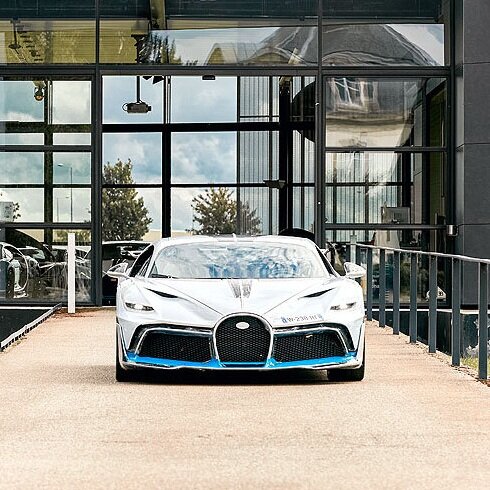Test drive lasts five hours
Since 2005, Steve Jenny has been responsible for issuing the dynamic approval for the hyper sports cars. As a quality assurance expert, he pays attention to even the tiniest details. He has painstakingly checked 95 percent of all Bugatti cars that have been built by hand in Molsheim up to the present day, and has driven over 340,000 kilometers in the Veyron, Chiron2 and now also the Divo while doing this. “I found my absolute dream job over 15 years ago. But it is also a job with a lot of responsibility,” explains Steve Jenny. The quality checklist for the Divo contains over 100 points that he must tick off.
Steve Jenny first checks whether the vehicle complies with the homologation that is required for the region to which it will be delivered. He also performs a final check of the customer’s chosen configuration. Have all the customer’s wishes and options been realized correctly? In the third step, the quality inspector tests all electrically operated functions such as the controlled display, power windows, navigation, sound system, and air conditioning system.
Only after this check has been completed does Steve Jenny start the W16 engine and drive slowly out of the Atelier. The test drive takes up to five hours and covers around a 300-kilometer route through Alsace. It takes the car through the Vosges mountains and includes stretches on public roads and motorways. During the dynamic approval test, Steve Jenny checks the response of the Divo to steering and driving commands over the course of the next few hours. “The bending and hilly roads of the Vosges mountains are ideal for this test drive. Here I can check the steering, cornering behavior, shift points, and hill starts,” explains Steve Jenny.
For acceleration and high-speed tests, every Divo drives on the closed runway at the Colmar airport. Here, the Divo can be subjected to various functional tests that require speeds of over 250 km/h. Steve Jenny continues to work through his checklist: Launch Control, driving in the different driving modes, airbrake function, fast lane changes at 170 km/h, braking behavior as well as full braking from 160 km/h to 0, ESP check and whether the full power of 1,500 PS is also available at 340 km/h, for example. “During the tests on the closed airfield, I can drive the Divo undisturbed and safely and can check all functions once more even at high speeds,” he says.
After leaving Colmar airport, the car is then driven at a more sedate speed on the motorway in order to cool down the 8.0-liter W16 engine with 1,500 PS and 1,600-newton meters. “With such an individual vehicle like the Divo which has largely been built by hand, a few things can come up after the drive which we then have to correct. But that is exactly our approach. We want to find any small but nevertheless possible points of criticism and eliminate them before delivery. Only then will the customer be happy with their Divo,” says Steve Jenny. He records any reactions, noises, or impressions that appear strange or not ideal to him on a voice recorder while driving. After the drive, he enters his comments on the vehicle routing card and analyses them together with his colleagues on the following day. The Divo is prepared for the next step only when the trained test drivers cannot hear even the tiniest sound that is out of place or feel any disturbing vibration. After the vehicle returns to the Atelier, the technicians change the gearbox oil as well as the wheels that belong to the car and fit the original underbody. This is followed by a last one-hour test drive over 50 kilometers in order to issue the final dynamic approval.


